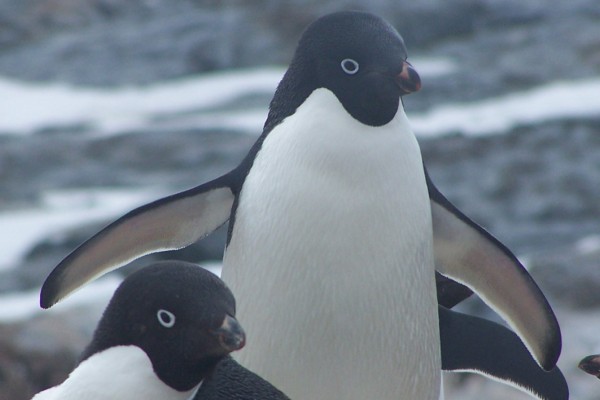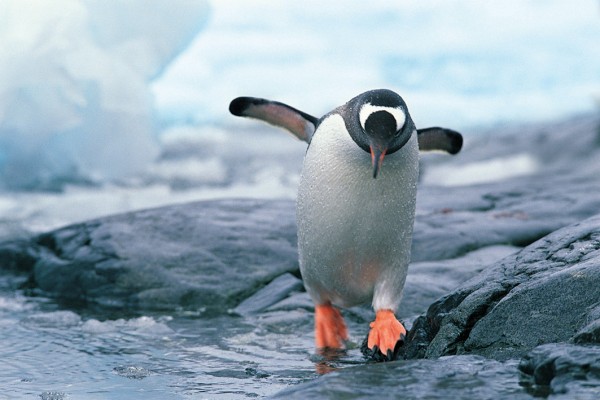Penguins are aquatic flightless birds living almost exclusively in the Southern Hemisphere. Major populations of penguins are found in Argentina and Chile.
They spend about half of their lives on land and half in the ocean. They are superbly adapted for life in the water, penguins have countershaded dark and white plumage, and their wings have evolved into flippers. They are countershaded for camouflage with black backs and wings with white fronts. A predator looking up from below (such as orca or a leopard seal) has difficulty distinguishing between a white penguin belly and the reflective water surface. The dark plumage on their backs camouflages them from above. 
They are astonishingly agile in the water and when swimming they look similar to a bird’s flight in the air. Within the smooth plumage a layer of air is preserved, ensuring good buoyancy. The air layer also helps insulate the birds in cold waters. Diving penguins normally reach 3.7 to 7.5 mph and their eyes are adapted for underwater vision. Smaller penguins do not usually dive deep, they catch their prey near the surface in dives that normally last only one or two minutes. Dives of the larger Emperor Penguin have been recorded reaching a depth of 565m for up to 22 minutes.
On land, penguins use their tails and wings to maintain balance for their upright stance. They either waddle on their feet or slide on their bellies across the snow, a movement called ‘tobogganing’, which conserves energy while moving quickly. They also jump with both feet together if they want to move more quickly or cross a rocky terrain. They often huddle together to keep warm and rotate positions to ensure each penguin gets a turn in the centre of the heat pack.
Penguins eat only seafood, including krill, squid and fish, they swallow their prey whole as they don’t have teeth. Penguins can be found on every continent in the Southern Hemisphere from the tropical Galápagos Islands (the Galapagos penguin) who live near the equator in Ecuador to Antarctica (the Emperor Penguin). There are 17 species of penguins and Emperor Penguins are the largest at 1.15m, these penguins are very recognisable for their distinct tuxedo-like appearance; the smallest of them are the ‘fairy penguins’ standing at just 16 inches tall. Climate change poses a threat to them, 13 of the 17 penguin species are threatened or endangered and sadly some are on the brink of extinction. But it’s not just warm waters and melting ice that is leaving penguins limited space to breed. Pollution and human invasion of their habitat, predators such as dogs, cats and weasels as well as commercial fishing are also factors.
Elena Larkin




